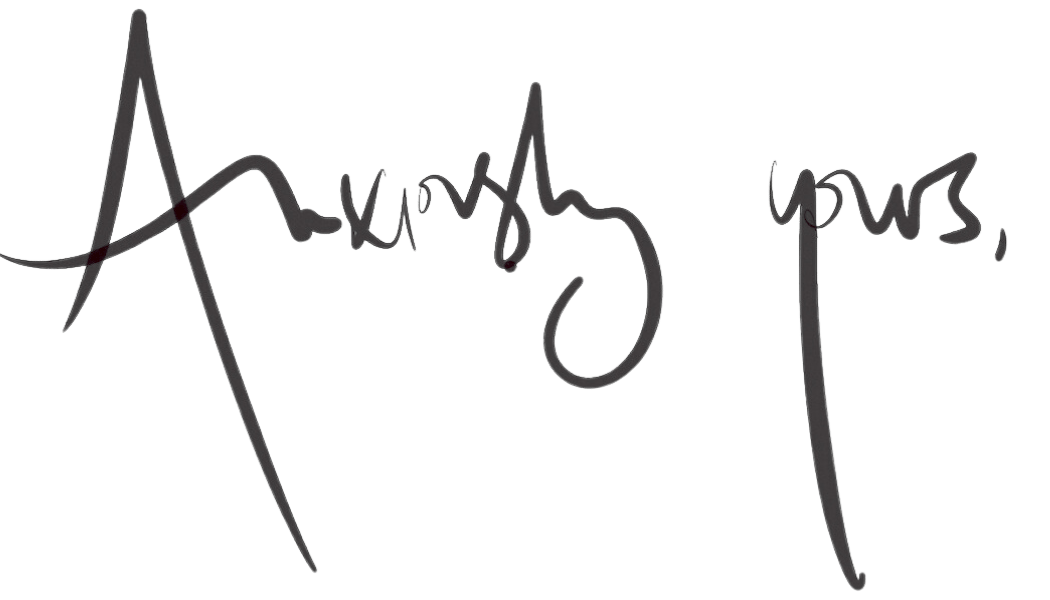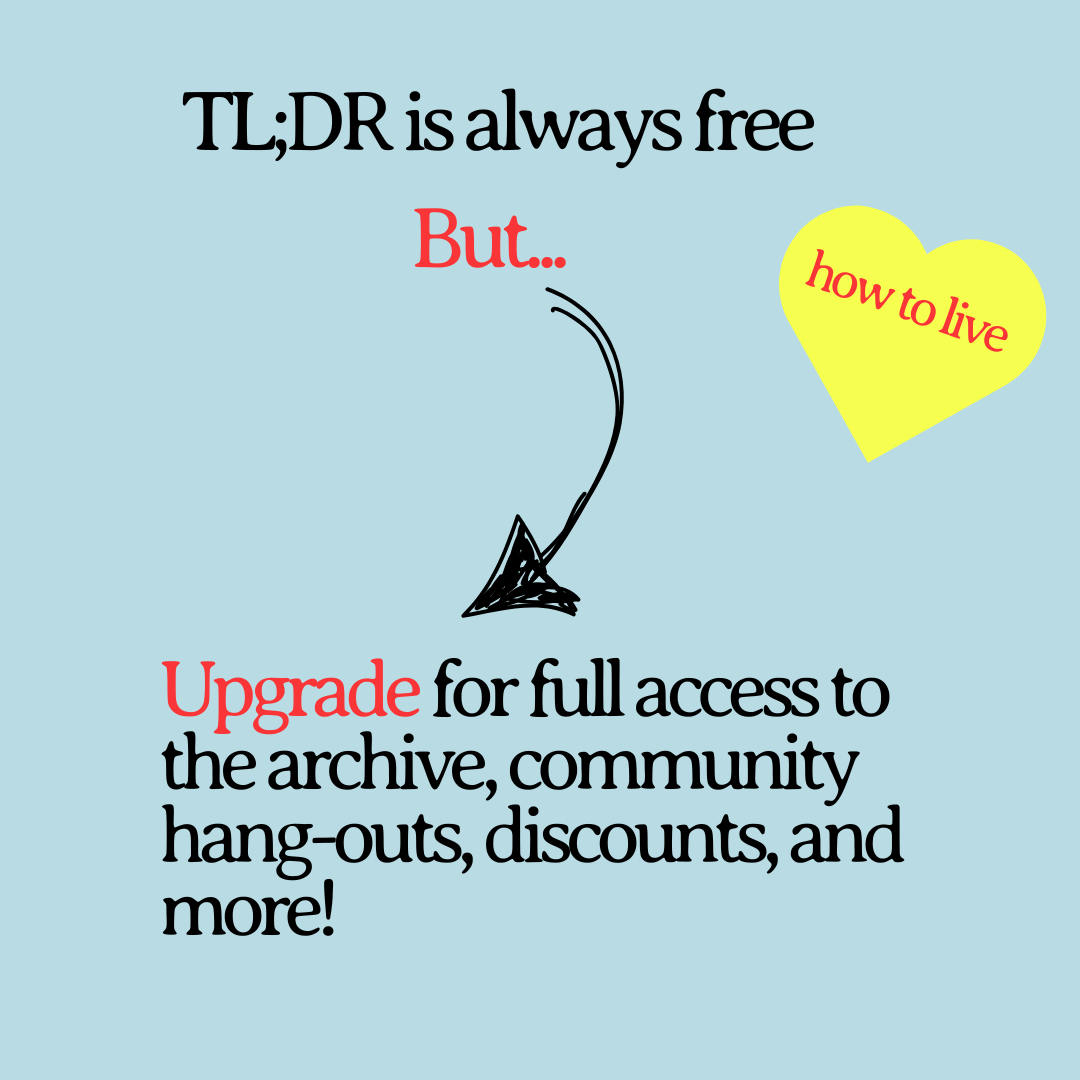TL;DR is a monthly digest summarizing the vital bits from the previous month's How to Live newsletter so you don't miss a thing.
For three years, I’ve poured thousands of hours into writing in-depth articles for How to Live, sharing them freely with this community. I believed in the power of these ideas and hoped donations would sustain the work—but that didn’t happen.
To keep going, How to Live must evolve. That’s why I’ve transitioned to a paid newsletter. This shift ensures the work continues—and that those who truly value it can directly support it.
If How to Live has been meaningful to you, I invite you to be part of its future. The lack of psychological insight in our society has become perilous. If ever there was a time to invest in understanding the hidden forces that shape our decisions and behaviors, it’s now.
On January 1st, 2025 I Wrote About Susan Sontag’s Seminal Argument in Against Interpretation.
For centuries, art was something to be felt—a visceral, emotional experience that revealed truths about the human condition. But over time, something changed. Art became something to decode, a puzzle to be solved rather than an experience to be lived.
In her seminal 1966 essay, Against Interpretation, writer and cultural critic Susan Sontag argued that the modern obsession with meaning had drained art of its power.
Instead of engaging with art emotionally and sensorially, we had turned it into an intellectual exercise—one that reduced complex works to mere symbols waiting to be "solved."
She believed this shift had done more harm than good.
By interpretation, I mean here a conscious act of the mind which illustrates a certain code, certain “rules” of interpretation.
But what happens when we stop searching for meaning and just experience art? What do we gain—and what might we lose?
On January 8th, 2025, I Wrote About Albert Bandura’s Theory of Self-Efficacy
Why do some people move through life with effortless confidence while others—equally, if not more, talented—are consumed by self-doubt?
Albert Bandura, one of the most influential psychologists of the 20th century, believed the answer lay in self-efficacy—not just vague confidence, but the deeply held belief that your actions shape your outcomes.
His research proved that self-belief isn’t something you have or don’t have—it’s something you build.
And for those struggling with doubt, he identified four specific forces that determine whether you break free or stay stuck.
The question is: Which ones are shaping you?
January 15th, 2025, Was A Guest Post On Humming By Some Dude Named Eddie Stern, Who Also Happens to be My Brother.
Today's How to Live features a guest post by Eddie Stern, a renowned yoga teacher, author, researcher and—the most vital of all his jobs—my brother.
He’s spent decades studying the intersection of yoga, neuroscience, and well-being. His book, One Simple Thing: A New Look at the Science of Yoga and How It Can Transform Your Life, explores the profound impact of breath on the mind and body.
Our lives run on patterns—our breath, our heart rate, the way we respond to stress. Most of these happen automatically, without us even realizing it.
But what if we could change them?
For thousands of years, yogis have used the breath as a tool to calm the mind and regulate the body.
Modern science is FINALLY catching up, revealing that something as simple as humming can trigger powerful physiological changes—boosting immunity, reducing stress, and even altering brain function.
Why does something so small have such a profound impact? And more importantly—how can you use it to transform your own state of mind?
Eddie walks us through it.
January 22nd, 2025 I Wrote a Piece On The Lesser-Known Trauma Response Called Fawning
Last week, New York Magazine published a deeply reported, profoundly unsettling piece on multiple credible allegations of sexual assault against the author Neil Gaiman.
The accusations have left many struggling with a disturbing contradiction: How could a beloved author, celebrated for his imagination and humanity, be accused of such harm?
And why, after these alleged assaults, did his accusers send him text messages offering comfort, placating him, and agreeing to his terms—terms that, in retrospect, didn’t align with their experience, particularly the notion that the relationship and its cruelty were consensual?
To outsiders, these messages seem unthinkable. But to those who understand trauma, it’s a familiar, haunting pattern.
These women weren’t confused, nor were they complicit. They were surviving.
For decades, we’ve dismissed this behavior under the misleading term Stockholm Syndrome, failing to grasp what’s really happening in these moments.
The truth is far more complex—and far more unsettling.
It’s called fawning, a survival instinct hardwired into those who sense, on a deep, primal level, that resistance isn’t safe. It’s why people stay close to their abusers. Why they placate them. Why they convince themselves, against all evidence, that what happened wasn’t that bad.
Understanding fawning means rethinking everything we assume about trauma, consent, and control.
And once you see it—you can’t unsee it.
January 26th, 2025 Was A Q&A On Why We Sabotage Ourselves
Q: I'm on dating apps but keep ghosting matches as soon as they want to meet. I tell myself I'm too busy, but really I'm terrified of rejection. How do I stop sabotaging potential relationships?
A: Wait, did I write this? JK—I relate.
Ghosting often reflects a fear of vulnerability and rejection—a way to maintain control by avoiding the risks inherent in connection—or, what I call Saturday.
Dr. Esther Perel, everyone’s favorite psychotherapist, known for her work on intimacy and relationships, explains that modern dating creates a paradox: we crave connection but fear the unpredictability and emotional exposure it demands. Ghosting becomes a protective mechanism, shielding us from the discomfort of being seen, judged, or potentially rejected.
Perel suggests that to break patterns of avoidance, we must confront the tension between autonomy and intimacy—confront! tension! Oy!
Start small by proposing manageable steps, like a short Sunday coffee date—on Zoom. If you don’t want to tell them that you get nervous about meeting people, tell them you believe all first dates should be short, and sweet. Setting boundaries, like time limits, can help you feel more in control while closing in on slippery terrain toward connection.
Use the time to suss each other out, and if it goes well, you can set the parameters for the next meeting—in person.
Like all good psychotherapists, Perel emphasizes reframing as an important tool. Look at your vulnerability as a strength. After all, each time you stay present in discomfort rather than fleeing, you’re building resilience and creating the conditions for meaningful relationships.
You’re building emotional callouses.
Here’s the best thing about real intimacy: it doesn’t demand perfection, it just requires willingness.
The best things in life come when we delay gratification. Remember this during the temporary discomfort of the beginning. It’s a small price to pay for a worth-it partner.
Q: I keep avoiding intimacy with new partners. Every time a relationship gets less fun and more serious, I bolt. Why do I do this, and how do I stop?
A: Oy, these questions are hitting VERY CLOSE TO HOME!
January 29th 2025 A Piece On The Cult Doctor John Sarno Who Healed People Without Medicine
For years, I was trapped in a cycle of debilitating stomach issues that controlled my life. Doctors dismissed me. My symptoms were “all in my head,” they said. But when I was finally diagnosed with panic disorder and prescribed antidepressants, my stomach problems vanished overnight.
So… were my symptoms real or imaginary?
This question—where the mind ends and the body begins—has haunted medicine for centuries. Despite mounting evidence that emotions and trauma can manifest as real, physical pain, Western medicine remains rigidly skeptical. Psychosomatic has become a dirty word. And for those suffering, this disconnect has devastating consequences.
Enter Dr. John Sarno.
A small, unassuming doctor with radical ideas, Sarno uncovered a stunning pattern: chronic pain often had little to do with structural damage—and everything to do with the mind. His groundbreaking work challenged conventional medicine, infuriated his peers, and changed thousands of lives.
But was he a visionary healer—or a dangerous heretic?
And what, if anything, did his unconventional method reveal about the hidden power of our own minds?
Until next week, I remain…

Amanda
P.S. Thank you for reading! This newsletter is my passion and livelihood; it thrives because of readers like you. If you've found solace, wisdom or insight here, please consider upgrading, and if you think a friend or family member could benefit, please feel free to share. Every bit helps, and I’m deeply grateful for your support. 💙
Quick note: Nope, I’m not a therapist—just someone who spent 25 years with undiagnosed panic disorder and 23 years in therapy. How to Live distills what I’ve learned through lived experience, therapy, and obsessive research—so you can skip the unnecessary suffering and better understand yourself.
Some links are affiliate links, meaning I earn a small commission at no extra cost to you. Every bit goes straight back into supporting this newsletter. Thank you!












 Upgrade
Upgrade